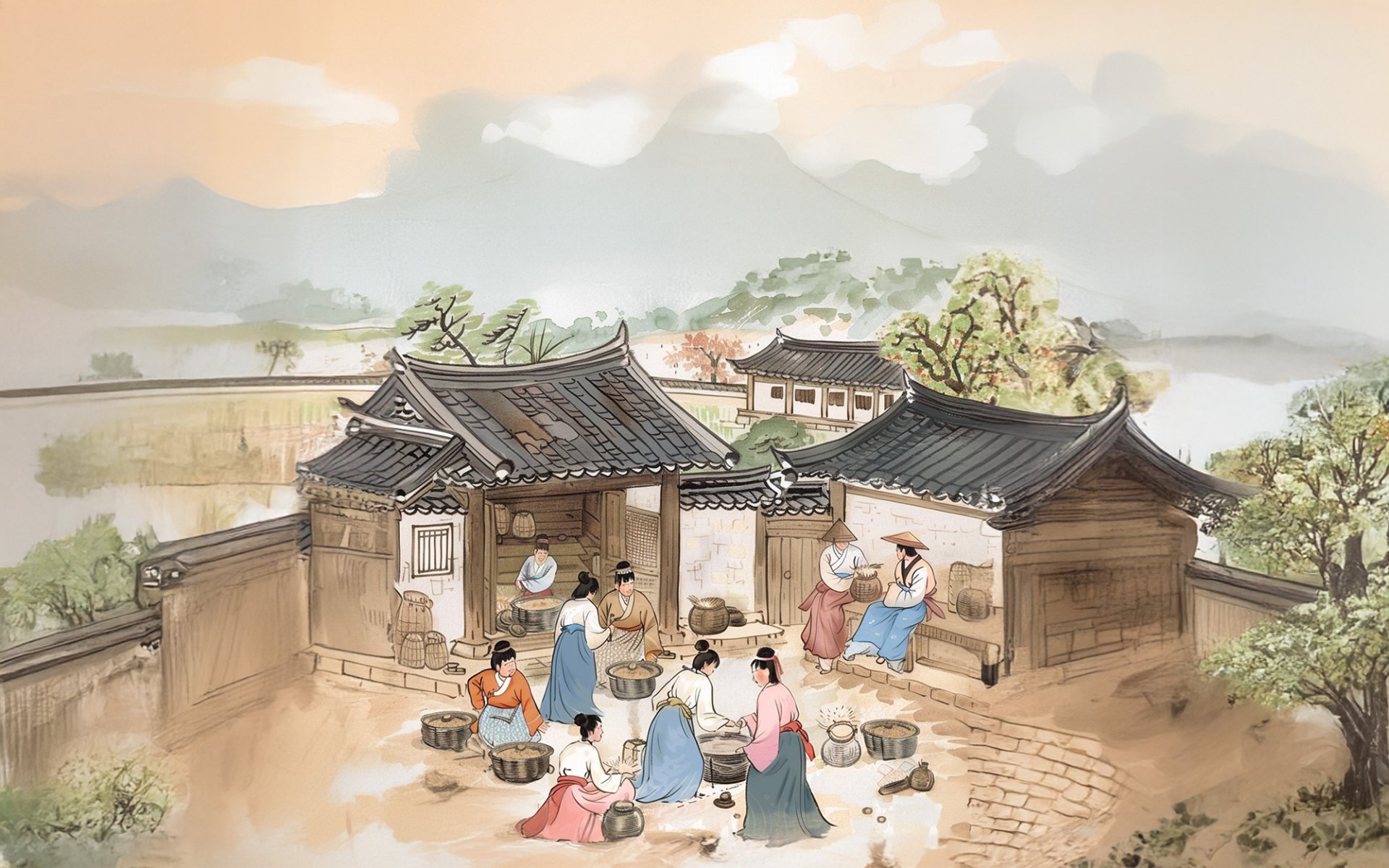Makgeolli (막걸리)

Makgeolli (มักกอลลี, 막걸리), also known as rice wine, is a traditional Korean alcoholic beverage with a history spanning over 2,000 years. It is an inseparable part of Korean culture and lifestyle. Archaeological evidence suggests its production dates back to the Three Kingdoms period (approx. 18 BCE - 660 CE), with written records appearing in books from the Goryeo Dynasty (918 - 1392 CE). Today, Rimping Supermarket invites you to learn about this distinctive "cloudy rice wine."
Makgeolli in the Goryeo Dynasty: Pear Blossom Wine and Farmer's Liquor
During the Goryeo Dynasty, Makgeolli was referred to as Ihwaju (이화주), or pear blossom wine, because it was commonly produced when pear blossoms were in full bloom.
However, during that era, Makgeolli was also known as Nongju (농주), meaning farmer's liquor, as it was primarily popular among farmers, while the upper class favored soju.
Additionally, different types of Makgeolli had distinct names: cloudy white Makgeolli was called Takju (탁주), and clear Makgeolli was known as Cheongju (청주).
In those times, Makgeolli was a popular drink among farmers because it was easily produced from readily available ingredients such as rice, wheat, or barley. The process involved cooking, steaming, or boiling rice and mixing it with Nuruk, a fermentation starter (mold culture) used for alcoholic beverages. After about a week of fermentation, the result was a smooth Makgeolli with a low alcohol content of approximately 6-8%. Makgeolli from this period had a complex flavor profilesour, sweet, slightly bitter, and a hint of saltiness, with an aroma of fermented rice and yeast, making it more challenging to drink than modern Makgeolli.
Makgeolli in the Joseon Dynasty: National Drink and Community Activity
During the Joseon Dynasty (1392 - 1910 CE), Makgeolli became a deeply ingrained part of Korean culture. Even the upper classes began to embrace it, and it was commonly found at festivals and religious ceremonies. During this same period, the term Makgeolli itself came into use to refer to this type of beverage. The word Mak (막) translates to "freshly," and Geolli (걸리) means "filtered" (referring to a coarse filtration that leaves a cloudy white sediment).
Furthermore, Makgeolli featured prominently in Korean literature and art during this time. Numerous poems and paintings from the Joseon era often depicted scenes of people enjoying Makgeolli, emphasizing its role as Korea's national beverage.
Makgeolli production during this era was often a community activity, with many villagers gathering to help produce it. Each village would have its unique recipe, resulting in a wide variety of flavors and styles of Makgeolli.
Decline and 21st-Century Resurgence
In the early 20th century, Makgeolli's popularity began to wane due to several factors: the introduction of modern brewing techniques and Western alcoholic beverages, the Japanese occupation of Korea (19101945), the subsequent Korean War (19501953), and increased government regulations and taxation.
However, in the 21st century, Makgeolli has experienced a significant resurgence in popularity. A renewed interest in traditional Korean foods has sparked modern consumers' interest. Makgeolli is not only appreciated for its unique taste but also believed by many contemporary drinkers to offer health benefits, containing antioxidants and probiotics that help balance gut bacteria.
In this era, many companies have begun to modernize Makgeolli's production methods and image. They've introduced additional flavors and aromas to make Makgeolli more approachable, such as strawberry, blueberry, mango, green tea, brown rice tea, lotus flower, almond, and coffee, among others, for commercial sale. This has led to Makgeolli being widely available in almost every convenience store across Korea.
Makgeolli on the Global Stage: Crossing Borders
Today, Makgeolli is enjoyed by a vast number of people. Makgeolli bars, also known as Makgeolli Jip (막걸리집), have begun to emerge in urban areas, attracting tourists to experience Korea's traditional beverage.
Moreover, Makgeolli has transcended Korea's borders, becoming known worldwide. Korean restaurants in various countries often serve Makgeolli and introduce it to those unfamiliar with Korean culture. This international interest has led to a growing export market for Makgeolli, making it available in many countries across the globe today.
From its humble beginnings as a farmer's drink, Makgeolli has journeyed through time, adapting and evolving, to return as a beloved beverage that is not just a cultural symbol but also an internationally recognized drink cherished by new generations for its taste and perceived health benefits.
You can find a variety of Makgeolli brands at select Rimping Supermarket branches!


